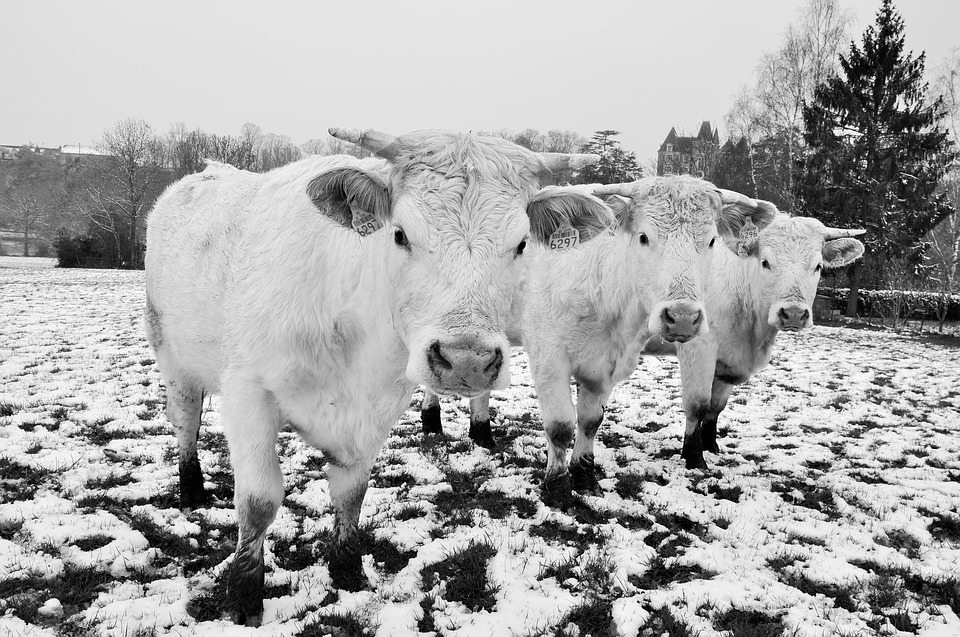During winter, the cold can cause homesteaders numerous headaches, but one that can’t be overlooked is our livestock’s need for water. Ice forms easily on exposed water tanks, buckets freeze up and crack, and fields are often far from power sources and water pumps. But don’t despair. You don’t need to spend this winter hauling water and banging ice. There is a better way!
The Ice Problem
Winter time will see cows’ and horses’ water needs increase. Animals expend more energy combatting the cold and as a result, they eat more to stay warm. With increased food intake, their water needs go up.
“Studies by the University of Alberta and Saskatchewan discovered that a mature cow needs at least 10 gallons of water a day in the winter. When the only water source available was snow, both dairy cows and beef cattle consumed less and showed marked deterioration in body condition and output. Animals that consume only snow suffer from mineral deficiencies that cause spontaneous abortions, poor vitality and impactions” (Wayne and Jerry Cook – Countryside Magazine online). Horses experience similar issues when water intake is limited, “the most common threat being impaction colic” (South Dakota University Extension, January 2013).
Try these ideas:
1. The Simplest Methods
Group water troughs together. This can form a “heat island,” especially when livestock gather. Having a number of water troughs also allows weaker animals a chance to get water without having to fight their way to the trough. Experiment to determine how much water your animals are drinking. If you fill the troughs to the amount they drink, you will have less ice buildup as the animals drink all, or most, of the water before it has a chance to freeze. Just be sure that your livestock are not receiving too little water. If the tanks are bone dry when you go to fill them, put more water in. Use common sense and check often when you first start regulating water.
Get Free Backup Electricity And Never Be Without Power!
Another great farmer’s hack is to enclose the water tank partially in a well-insulated shed. This slows heat loss from the water. On really cold days you can run a small heater or lamp inside the shed and this should keep the water from freezing over. If you can’t build a shed, consider insulating your water tanks and covering much of the top of the trough. Just be sure that weaker animals are still getting a chance to drink.
If the above measures still aren’t enough to keep ice from forming, then you may want to consider several available systems. There are varying costs of money and time required, but you can select what will work best for your setup.
2. Automatic Watering Units
These units generally require larger numbers of animals to be using them to keep the water flowing and not freezing, although some units may have a continuous running water system set up. There are units with built-in heating components as well. Generally, watering units are best installed by a professional, but they work like a gem once in place.
3. Electric Tank Heaters and Deicers
There are numerous heaters for most sizes of tanks. The downside is that they require a ready supply of electricity and will fail to work once power is lost. However, they keep water above freezing quite well. Submergible heaters are the best as the animals won’t bother them as much. Look for a unit that has a built-in thermostat so that it will shut off during warmer weather and spare you extra trips to the paddock or pasture. However, be sure to check that the unit is working during colder weather and that your animals haven’t accidentally removed it.
4. Heated Buckets
Heated buckets can work well for solo animals, but they generally need to be secured to something so they aren’t ripped from their electricity source. Buckets work especially well in run-in shelters and unheated barns.
5. Propane Stock Tank Heaters
When electrical sources are an issue, propane stock tank heaters can be an excellent option. Large portable units can be placed far from buildings and always run, even when power outages may affect the rest of your operation. Be sure to check, however, that the pilot light isn’t extinguished by strong wind. Also, check fuel levels periodically.
6. Water Circulators
Water circulators don’t use heat to keep ice from forming, but rather work the same way that a stream or creek does. Moving water doesn’t freeze as fast. Circulators generally run off of batteries and you have the option of hooking the batteries up to a solar power system to recharge them. Keep in mind, though, that circulators work best with automatically filled tanks, as the circulators need to be in contact with the water to keep working.
“The Big Book Of Off The Grid Secrets” — Every Homesteader Needs A Copy!
Keeping your livestock’s water supply at optimum levels during winter’s freezing temperatures can be intimidating, but with the options shared above, you can get started on changing this wintertime hassle to something that practically takes care of itself. Don’t be afraid to get creative if the options above don’t quite suit you.
Areas of the country often handle freezing temperatures differently and using creativity to employ the above solutions may solve your winter water problems. You just might become “that guy” who others turn to for country wisdom.
How do you keep livestock water from freezing? Share your tips in the section below:
 Off The Grid News Better Ideas For Off The Grid Living
Off The Grid News Better Ideas For Off The Grid Living






